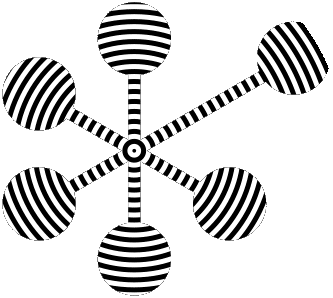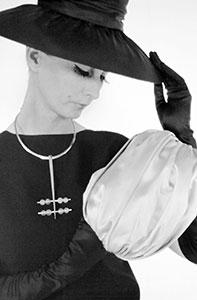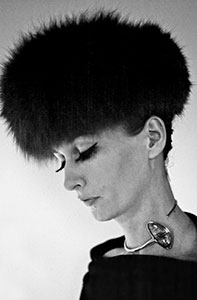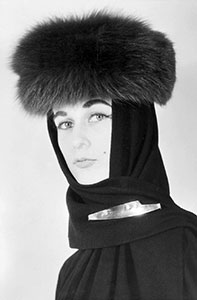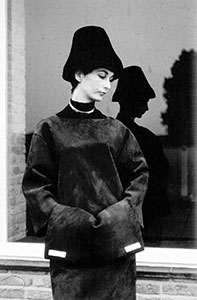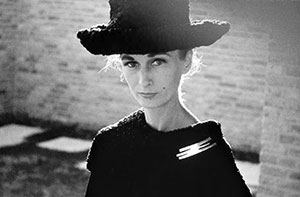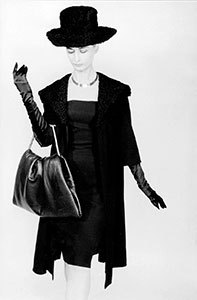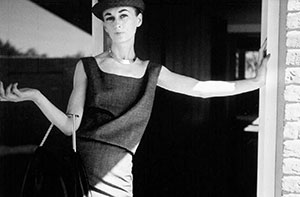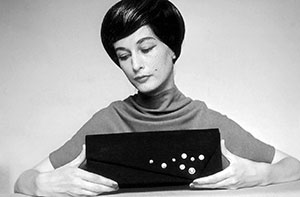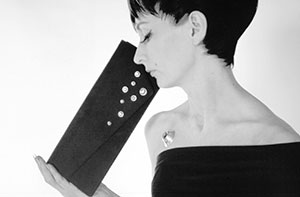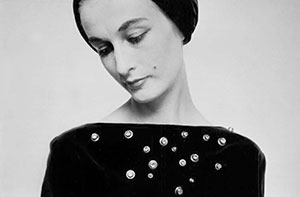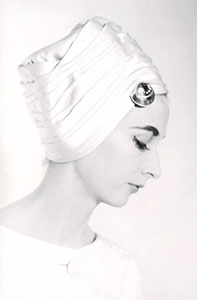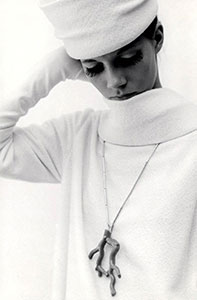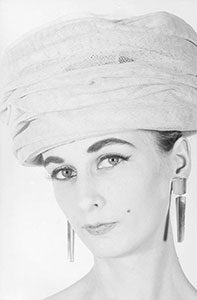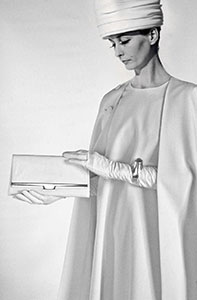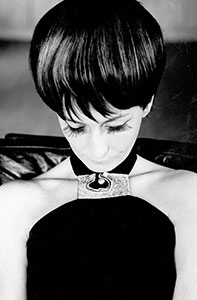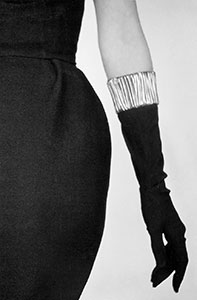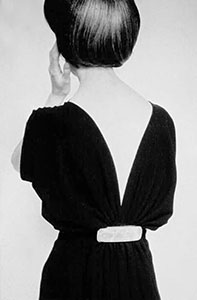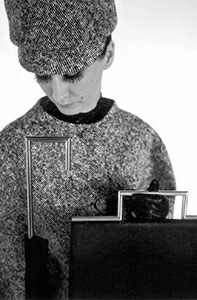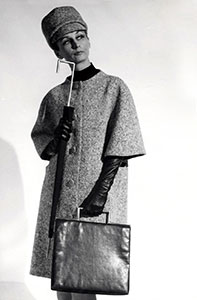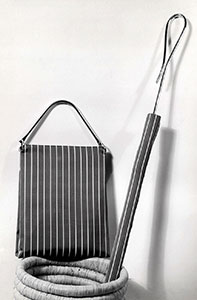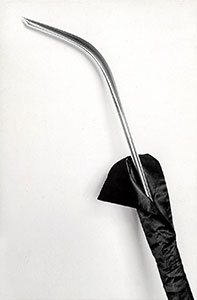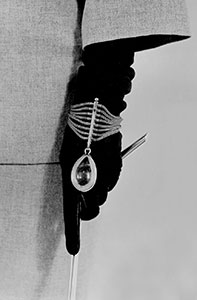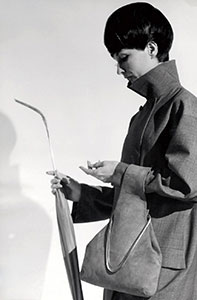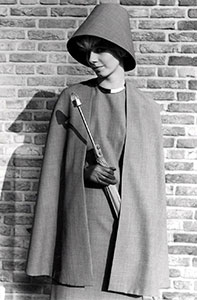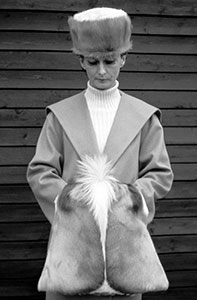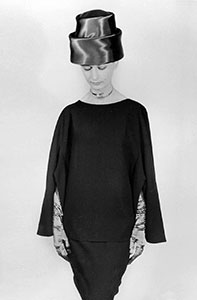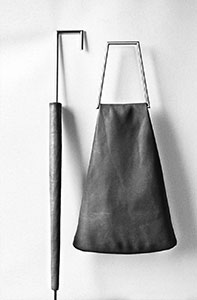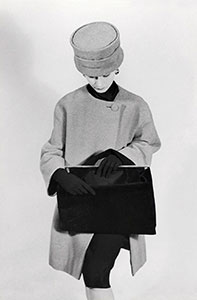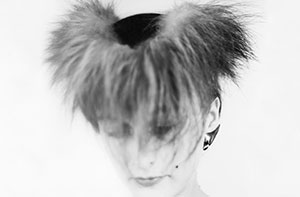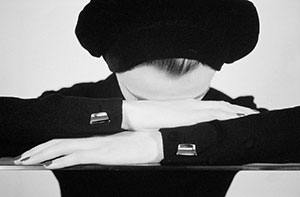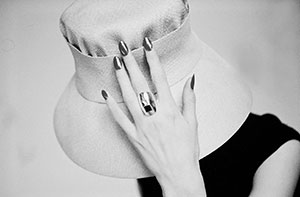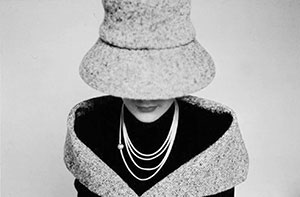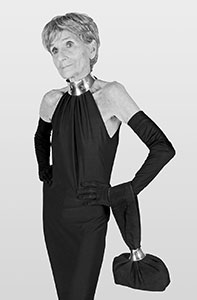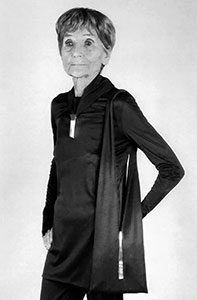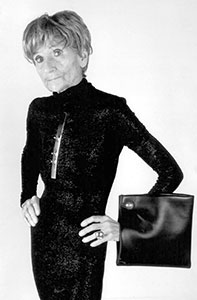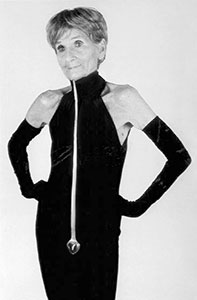Everything in her work is methodically coordinated: dresses in sophisticated cuts, perfectly combined with accessories such as bags, umbrellas, hats and wigs, and all accentuated with extravagant jewellery by Friedrich Gebhart, her husband and work partner. Fashion is a holistic concept here, something that prompted comparisons with Coco Chanel, who – like Herta Gebhart herself – was her own top model. The little black dress for example, a shift dress, or the silk evening gown were just as essential as everyday outfits made of functional and robust tweed that were perfect for surviving a bleak, rainy day without sacrificing elegance.
When can a woman be said to be well dressed? What is the definition of style? The Second World War was a time of hardship and privation. But as living standards rose in the post-war era, so too grew the desire for luxury, with a strong orientation towards Parisian haute couture. With more and more social events on the calendar, it became vital that one was appropriately attired for all occasions. Women aspired not only to look attractive, but also to exhibit exquisite taste. It was in this time that Herta Gebhart began developing fashion creations, a time in which high-quality materials were still in very short supply. Each one of her ensembles is thrillingly sleek and boasts that certain special something: the severe line of the cut, a striking gather or fold, a button row or dialogue with an accessory. Every detail is carefully considered to ensure the elements stand in harmony, with no cheap effects employed. »The secret is harmony,« stated Herta Gebhart, a master of the high art of omission. As an impressive highlight, jewellery pieces often also function in her work as clasps or fasteners on items of clothing and even on bags.
The young designer started her career with a strikingly decorative style, and with remarkable focus and discipline. She gave up her secure but dull job as a specialist metallographer and enrolled at fashion school in Frankfurt at the age of 28. To begin with, she did not tell her parents about this risky move, and she financed her studies by working as a seamstress in the evenings. After graduating, she went freelance with her husband, who was a goldsmith specialising in jewellery and sacred objects, and who taught at the Münster Decorative Arts College for many years. After the first few years with her own fashion studio, she focused entirely on collaborative work with him. She also learned the art of goldsmithing. The artist couple made an impression with sophisticated jewellery shows and at exhibitions in Germany and abroad. There followed flawless combinations of dresses and jewellery, free from the restrictions of commercial considerations, which Herta Gebhart tailored specially for herself and for which she would later win numerous awards. Her studio also produced bags and umbrellas. Herta Gebhart was a multi-talented master of various artistic crafts. She was appointed lead instructor of the leatherworking class at the Offenbach Decorative Arts College. »You first have a material, then an idea, and finally you have that tingling in your fingers« – her passion for fashion accompanied her into old age.
Life and work
b. 1919 d. 2017
| 1938 | A Levels |
| 1930-41 | Training in metallography and materials science at Lette-Haus Berlin |
| 1941-47 | Metallographer at the Metallgesellschaft research laboratory in Frankfurt am Main |
| 1947-50 | Training in fashion design at the Institute of Fashion, Frankfurt am Main |
| 1950-56 | Own fashion studio |
| ab 1956 | Teaching leatherworking at the Offenbach Decorative Arts College |
| ab 1957 |
Working with her husband Friedrich Gebhart in the gold- and silversmithing workshop. More than 100 fashion shows in Germany and abroad |
Fields of work
Jewellery and equipment, designs for industry, fashion shows for her own jewellery
Exhibitions
| 1958 | Brussels World's Fair |
| 1963/66 | International Decorative Arts Fair Stuttgart |
| 1964 | Milan Triennial |
| 1965-75 | North Rhine-Westphalia State Exhibition |
| 1965 | Touring exhibition of German decorative arts in India |
| 1966 | Touring exhibition of German decorative arts in the USA |
| 1967 | Montreal World's Fair |
| 2003 | Exhibition in the Münster Stadtmuseum »Elegance in Silk and Gold – the Gebharts« |
Prizes
| 1969 | Silver medal in the Hornschuch company's design competition |
| 1975 | State Prize of North Rhine-Westphalia |
Captions
Note: All photos displayed are from the family estate. The information about the materials used in the ensembles is incomplete. Accurate dating is not possible unfortunately.
